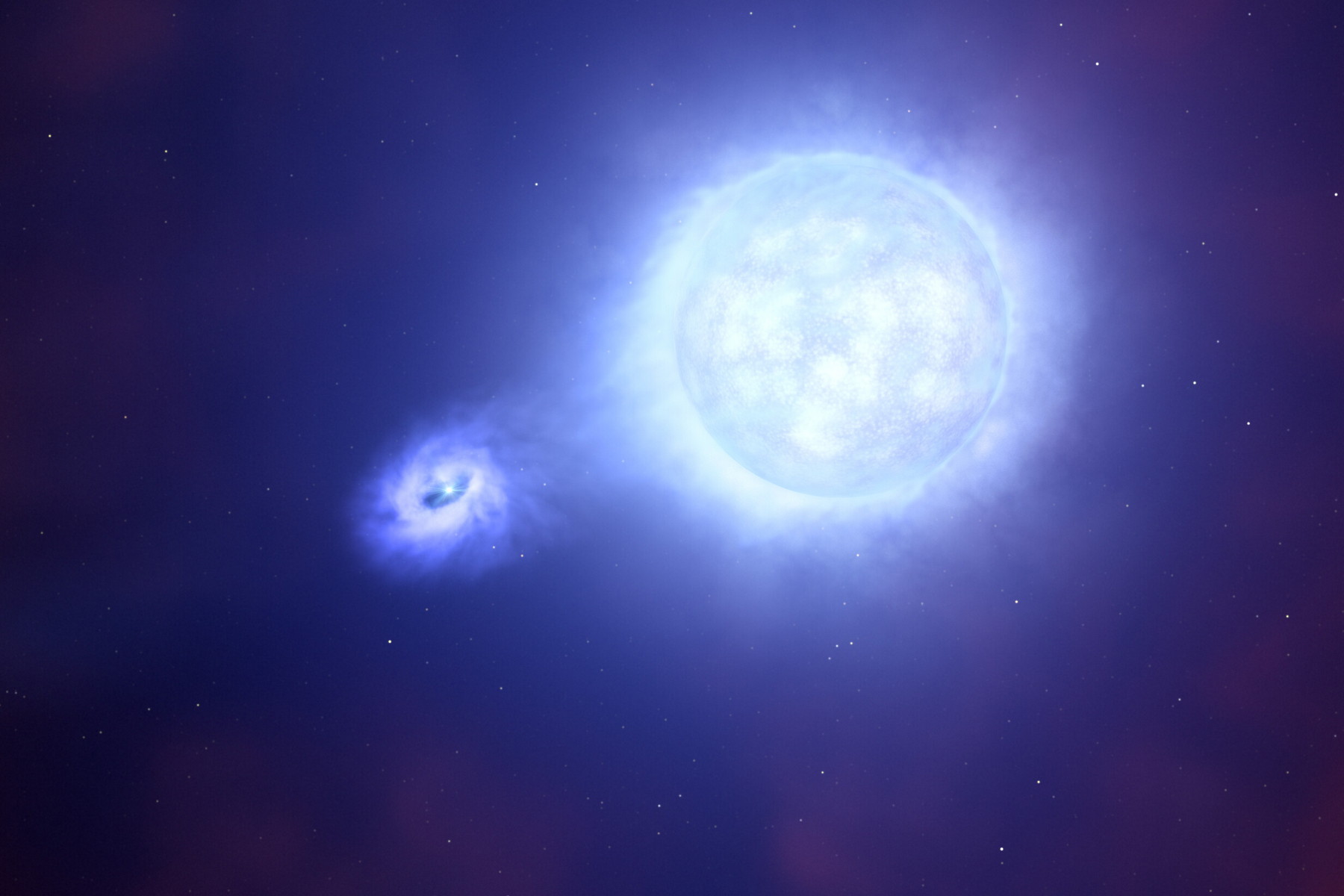When massive stars reach the end of their lives, they collapse under their own gravity so quickly that there is a violent explosion known as a supernova. Astronomers believe that after such an exciting explosion, only a very dense core – the compact remnant of the star – remains.
Depending on how massive the star is, the compact remnant will either be a neutron star – an object so dense that a teaspoon of its material would weigh around a trillion kilograms here on Earth – or a black hole – an object from which nothing, not even light, can escape.
Scientists have found many clues in the past that indicate this chain of events. An example would be the discovery of a neutron star in the Crab Nebula, a cloud of gas left over from the explosion of a star nearly a thousand years ago. But they had never seen this process happen in real time before. Direct evidence of a supernova leaving behind a compact remnant was still not forthcoming.
Flashing mystery
The breakthrough came in May 2022, when a South African amateur astronomer Berto Monard discovered a supernova SN 2022jli in the spiral arm of a nearby galaxy NGC 157, 75 million light years away. Two independent teams focused their attention on the aftermath of this explosion and found it to be unique in its behavior.
After a supernova explosion, its brightness fades, and astronomers usually observe a smooth decline in the light curve. However, the behavior of SN 2022jli differs in this respect: the total brightness does not decrease smoothly, but oscillates up and down approximately every 12 days.
“In the SN 2022jli data, we see a repeating sequence of waxing and waning,” he says Thomas Moorea PhD student at Queen’s University Belfast in Northern Ireland, who led the supernova study published in the magazine late last year Astrophysical Journal. “This is the first time that periodic oscillations over many cycles have been observed in the light curve of a supernova,” notes Moore in his article. Scientists believe that the presence of more than one star in the SN 2022jli system could explain this behavior.
It is not unusual for massive stars to orbit another star in what is known as a binary system, and the star that gave rise to the supernova SN 2022jli was no exception. What is remarkable about this system, however, is that the other star apparently survived the violent death of its partner, and the two objects likely continued to orbit each other.
The data obtained by Moore’s team did not make it possible to determine exactly how the interaction between the two objects caused the light curve to oscillate. The supernova SN 2022jli was therefore focused on by scientists from the Weizmann Institute of Science in Israel, who also had other observations at their disposal. In addition to oscillations in visible light, which Moore’s team also discovered, they also recorded periodic movements of hydrogen gas and gamma rays. The necessary data was collected by a fleet of instruments on the ground and in space, including, for example, the X-shooter instrument on the Chilean VLT telescope.
Space theft
When the two teams put all the clues together, they agreed on the following scenario: material ejected during the supernova explosion “fluffed up” the companion star’s hydrogen-rich atmosphere. The compact object left after the explosion then flew through the companion’s atmosphere on its path, “stealing” some of its hydrogen gas and forming a hot disk around itself. This periodic “stealing” of matter, or accretion, released large amounts of energy, manifesting as luminosity oscillations.
Although scientists could not observe the compact object itself, they concluded that this accretion can only be caused by a hidden neutron star or perhaps a black hole that pulls in matter from the puffy atmosphere of a companion star. “Our research is like a puzzle that can only be solved by collecting all possible evidence,” he says Ping Chena research fellow at the Weizmann Institute of Science and lead author of the study published in the magazine these days Nature.
Even the presence of a black hole or a neutron star does not mean the end of questions. Scientists will now try to find an answer to the question, what is the exact nature of the compact object thus created and what end could this binary system await? New-generation telescopes, such as the Extremely Large Telescope, which is scheduled to begin operation at the end of this decade, could help in this direction.
2024-01-17 00:15:09
#Missing #link #Supernovae #give #birth #black #holes #neutron #stars

/nginx/o/2024/01/17/15836140t1h9fbc.jpg)
